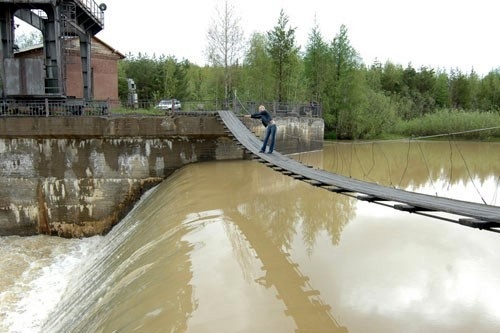
The World Small Hydropower Development Report (WSHPDR) 2019 is the result of a collaborative effort between the United Nations Industrial Development Organization (UNIDO), the International Center on Small Hydro Power (ICSHP) and over 230 local and regional small hydropower (SHP) experts, organizations, engineers, academics and government officials across the globe.
Prior to the World Small Hydropower Development Report (WSHPDR) 2013, it was clear that a comprehensive reference publication for decision makers, stakeholders and potential investors was needed . The 2019 edition aims to not only provide an update but also to greatly expand on the 2013 and 2016 edition by providing improvements on data accuracy with enhanced analysis and a more comprehensive overview of the policy landscapes compiled from a larger number of countries.
Despite the appeal and benefits of small hydropower (SHP) solutions, much of the world’s SHP potential remains untapped and in some regions capacity has decreased in recent years. The global installed SHP capacity for plants up to 10 MW is estimated at 78 GW according to the World Small Hydropower Development Report (WSHPDR) 2019, an increase of approximately 10 per cent compared to data from the WSHPDR 2013. Figures in table below show that increase in Small Hydro makes only 1.1% of increase in all renewables and 4% of overall increase in hydropower capacity (Data from IRENA 2019).
| Technology | 2013 MW | … | 2018 MW | increase since 2013 MW | increase % |
| Total all low carbon | 1 563 122 | 2 350 755 | 787 633 | 50.39 | |
| Hydropower | 1 135 533 | 1 292 595 | 157 062 | 13.83 | |
| Wind | 299 941 | 563 726 | 263 785 | 87.95 | |
| Solar | 139 603 | 485 826 | 346 223 | 248.01 | |
| Bioenergy | 84 703 | 115 731 | 31 029 | 36.63 | |
| Geothermal | 10 731 | 13 329 | 2 598 | 24.21 | |
| SHP (2019) | 71 000 | 78 000 | 7 000 | 9.86 |
Thus the report makes obvious that small hydro is practically irrelevant to development of most national energy systems and hardly could be sold as “climate mitigation” measure. Therefore the Report stresses that small hydro still plays a major role in improving many lives. This impact is shown in 18 case studies of successful SHP implementation in a range of communities. The case studies add a more detailed, practical perspective on the transformative potential of SHP and the best practices. Case studies give specific examples of communities that are using SHP for productive purposes to meet their needs and improve quality of life. And as long as SHPs fulfill needs of small isolated communities and do not intend to feed national grids their negative environmental impacts are typically not deadly. However “subsistence” hydropower is not that common in the world and often is not sustainable in a long term. Most schemes are intended to feed into national grids and play by “market rules”, multiplying profits notwithstanding “externalities”.
The report recognizes that “unregulated SHP development” can result in significant ecological impacts, including river loss of water, changed river ecology, reduced river connectivity and affected migratory fish and other aquatic species. “To maintain the ecological safety of the sector, the future of SHP development should be in the form of green SHP, supported by regulations, guidelines, incentive policies and practices.” The Report fails to name a country blessed with enforceable regulations of this kind and still capable of building small hydro at mass-scale.
A special case study is devoted to “green small hydro” of China. It describes changes in the Government’s attitude towards its 47000 SHPs. The Government has established many environmental protection zones, natural reserves, biosphere reserves, soil and water conservation areas, and even conservation areas for drinking water. An increasing number of SHPs, established early in China’s SHP development cycle, find themselves located in various reserves. Additionally, environmental issues related to their operation are increasingly visible. The Government has refurbished, used either punitive measures or shut down such SHPs in an attempt to address environmental issues. Overall, the China Government’s attitude towards SHP has changed from vigorous advocacy to strict regulation.
Unfortunately this Report fails to provide information on negative environmental and social impacts from small hydro in different countries and\or any coherent information on dam decommissioning. In recent years number of dams decommissioned annually likely exceeds 1000.
Even more surprisingly the Report does not talk about the cost of construction for small hydro, which is typically very high compared with price for 1 kW of installed capacity in other renewable energy sources. Meanwhile social protest, high environmental impacts and very high construction costs for a unit of newly installed capacity makes small hydro less and less attractive investment target all over the world. Other RE sources are typically less controversial and more affordable for most local communities.
For example, enormous untapped potential of small rivers in Russia is unlikely to be utilized in future. From 2016 to 2019 installed capacity of small hydro decreased by 15 MW (or 2.5%). The country presently has 141 power plant qualified as small hydro by local regulations, while in 1960 it had 6500 small hydropower plants.
The time of small hydro is largely over. Let this industry die in peace, not destroying still intact free-flowing streams…
REPORT HERE

